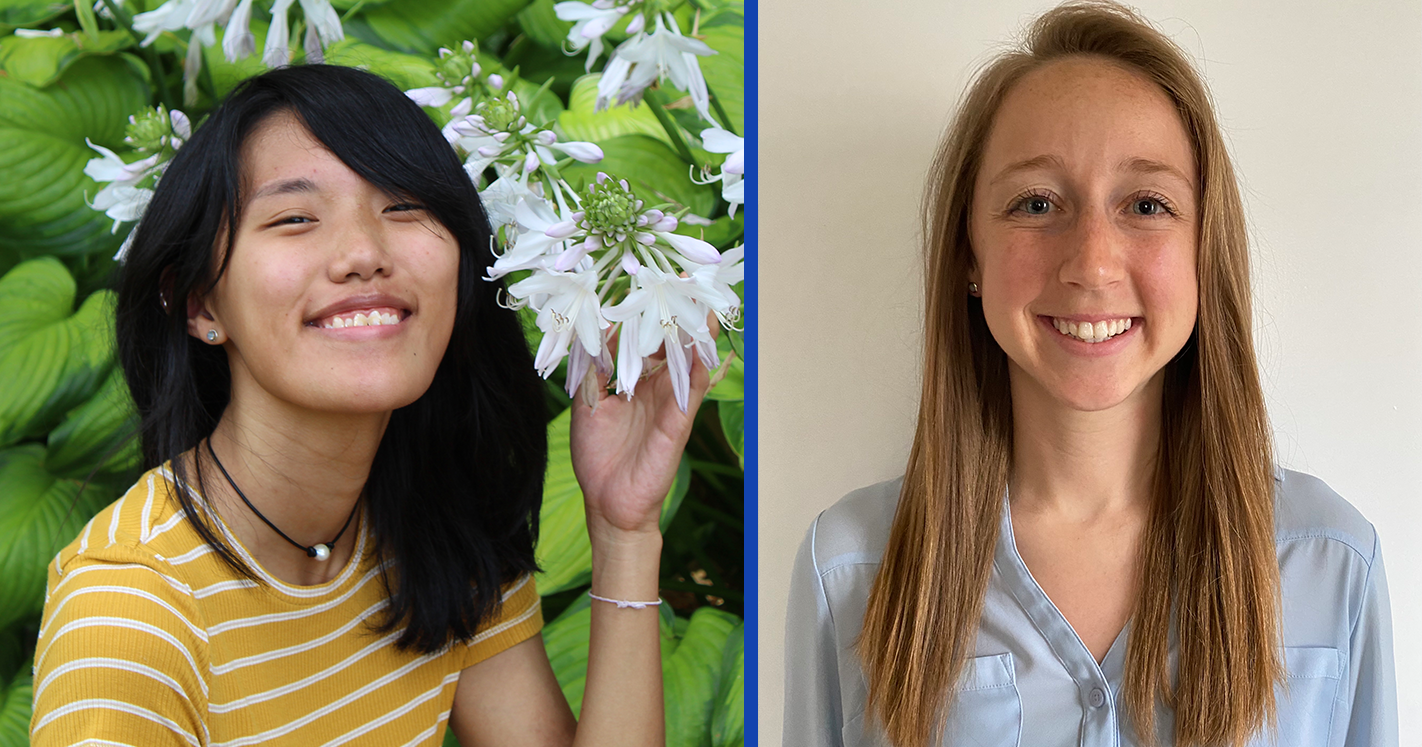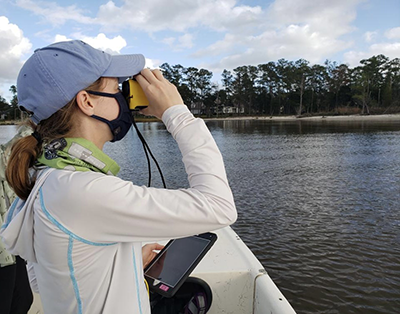NC Sea & Space Grant Programs Announce New Fellows

North Carolina’s Space Grant and Sea Grant programs are pleased to announce recipients of joint graduate research fellowships for 2021-22: Maya Hoon of the University of North Carolina at Chapel Hill and Jessica Richter of East Carolina University.
This fellowship provides support for graduate students researching high-priority needs within North Carolina watersheds, coastal areas and nearshore environments. The graduate students will utilize data from the vast archives and remote-sensing capabilities of NASA and the National Oceanic and Atmospheric Administration (NOAA), including data collected from airplanes, unmanned aerial vehicles or unpiloted submersibles or other technologies in their work.
“The partnership with North Carolina Sea Grant has opened a new range of research topics and techniques for students interested in aerospace, coastal issues or both,” says Jobi Cook, associate director of NC Space Grant.
“This fellowship uniquely encourages students to discover ways to expand their research, using new tools and data sets, or to find new topics for tools that they know well. We’re looking forward to the innovations this year’s fellows will bring to their fields.”
Maya Hoon

Hoon will be comparing how heavy metals influence the genes of microbes found in the Neuse River Basin. She will be comparing the genes of organisms found in the water to those found in the sediment, looking for evidence of the organisms developing the ability to withstand heavy metal poisoning.
When organisms are exposed to heavy metals, like mercury and others, in specific quantities, the exposure is lethal. However, in different quantities, the dose can actually spur the organisms to develop genes to protect them from the heavy metals – and these genes could co-occur with antibiotic resistance genes because they are thought to be linked on the same area of the DNA strand.
That linkage means if a heavy metal resistance gene spreads to another bacterium, an antibiotic resistance gene could transfer as well. The resulting gene spread could help bacteria develop resistance to medicines used to treat people against those bacteria, like antibiotics.
“The World Health Organization and Centers for Diseases Control and Prevention deem antimicrobial resistance – developed resistance within bacteria, viruses, fungi and parasites to medicines used to treat them – to be one of the most pressing and challenging global public health issues of our time,” Hoon says.
As more microbes become resistant, she notes, antibiotics will be rendered less effective in treating infections, leading to a projected increase in costs to treat infections and in potential deaths from infections.
In order to effectively monitor antimicrobial resistance, Hoon stresses it is important to understand the link between heavy metal abundance and the abundance of antimicrobial resistant genes in microbes in the sediment versus the water. She also must understand other factors that may influence that linkage, such as pH, dissolved oxygen, precipitation, sunlight and more.
For her research, Hoon will be taking water and sediment samples from the Falls Lake area in the Triangle, a wastewater treatment plant at Marine Corps Air Station Cherry Point located in Havelock, North Carolina, and the lower points of the Neuse River Estuary, where the estuary meets the Pamlico Sound.
To analyze her samples, she will utilize plasma mass spectrometry to detect heavy metals. She will be using NASA satellite data to record precipitation and total sunlight from each sampling date, to begin to piece together a total picture of where, when and how microorganisms may develop resistance.
Hoon’s advisor is Michael B. Fisher in the Department of Environmental Sciences and Engineering at UNC Chapel Hill. Originally from Charlotte, North Carolina, Hoon earned her bachelor’s degree in environmental sciences from NC State University, with a concentration in environmental toxicology. Read about some of Hoon’s undergraduate research experiences in her N.C. Water Resources Research Institute guest post.
Jessica Richter

Richter aims to generate accurate and up-to-date shoreline maps of the Neuse River Estuary that capture estuarine shoreline erosion. The maps will be additional tools for local planners in Craven and Pamlico counties, providing important context regarding storm-induced erosion and aiding in prioritizing future mitigation and restoration efforts.
“This fellowship will allow me to work closely with local planners and stakeholders as I produce the updated shoreline maps,” Richter notes. “This collaboration will enhance the value of the map products and improve communication to rural estuarine shoreline communities as they consider the best actions for recovery and adaptation.”
The Neuse River Estuary is a major tributary within the Albemarle-Pamlico Estuarine System (APES), the second largest estuarine system in the United States.
“Subject to rising sea levels and an increase in storm frequency,” Richter explains. “The APES and its major tributaries are experiencing significant shoreline change.”
To create her maps, Richter will use digital image processing techniques – like object-based image analysis, machine learning and ensemble analysis – to assess several remotely sensed data sources, including aerial imagery, satellite imagery, LiDAR elevation data and corresponding intensity imagery.
These advanced processing techniques have the potential to improve shoreline classification accuracy and efficiency. Although official shoreline maps exist and are updated regularly, researchers and land managers have yet to use the advanced processing techniques Richter is using within the Neuse River Estuary, so Richter’s work will satisfy a need to provide extra context to stakeholders regarding storm-induced erosion. She hopes her maps will aid in prioritizing future mitigation and restoration efforts.
Richter’s advisor is Hannah Cooper of the Department of Geography, Planning and Environment at East Carolina University. Richter is originally from St. Charles, Illinois, and earned her bachelor’s degree in marine science from Eckerd College in St. Petersburg, Florida.
- Categories:


